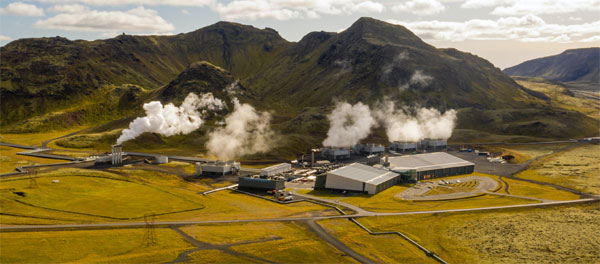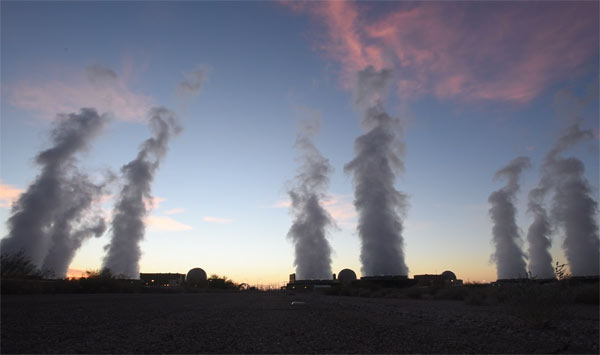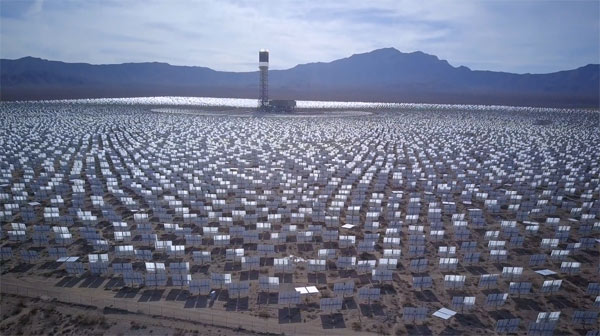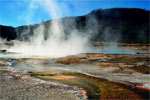Pros and Cons of Geothermal Energy
In the quest for sustainable and environmentally friendly energy sources, geothermal energy stands out as a promising candidate.
Harnessing the Earth's internal heat, it offers a unique combination of reliability, efficiency, and low environmental impact.
However, like any energy source, geothermal energy comes with its own set of challenges and limitations.
Published: November 7, 2023.

What is Geothermal Energy
Geothermal energy is a form of renewable energy that is harnessed from the heat stored beneath the Earth's surface.
Originating from the planet's formation and radioactive decay of minerals, this energy manifests as heat in the Earth's crust.
Geothermal resources range from shallow ground to hot water and rock a few miles beneath the Earth's surface and even farther down to the extremely high temperatures of molten rock called magma.
These heat resources can be tapped into for various uses, such as generating electricity, heating buildings, and industrial processes.
In geothermal power plants, wells are drilled into geothermal reservoirs to bring hot water and steam to the surface, where they are used to drive turbines that generate electricity.
This method provides a sustainable, low-emission energy source, making geothermal energy a key component in the transition towards a cleaner, more sustainable energy future.
Advantages of Geothermal Energy
As a fossil-fuel-free energy source, geothermal energy has many advantages, including:
- Environmental Benefits: Geothermal energy is a clean and sustainable energy source, producing minimal greenhouse gases compared to fossil fuels. It significantly reduces our carbon footprint and aids in combating climate change.
- Renewability: Unlike fossil fuels, geothermal energy is virtually inexhaustible as long as the Earth exists. It offers a continuous, reliable source of energy, unaffected by weather or external factors.
- High Efficiency: Geothermal power plants have high efficiency in energy conversion, with low energy requirements for operation. They use less land per megawatt than wind or solar farms.
- Low Operating Costs: After the initial investment in infrastructure, the operational and maintenance costs of geothermal plants are relatively low compared to conventional power plants.
- Stability in Energy Supply: Geothermal energy provides a stable, consistent power output, unlike solar or wind energy, which are intermittent and depend on weather conditions.
- Local Economic Benefits: The development of geothermal resources can stimulate local economies, creating jobs in plant operation and maintenance, as well as in the construction phase.
- Versatility: Geothermal energy can be harnessed for a variety of uses, including electricity generation, heating, and industrial processes, offering a wide application spectrum.

Disadvantages of Geothermal Energy
However, geothermal energy also has some drawbacks, including:
- High Initial Costs: The upfront cost of establishing geothermal plants, including exploration, drilling, and infrastructure development, can be prohibitively high.
- Geographical Limitations: Geothermal energy is location-specific, requiring proximity to tectonic plate boundaries or hotspots, limiting its applicability in many regions.
- Environmental Concerns: While cleaner than fossil fuels, geothermal energy can still have environmental impacts. These include land use concerns and the potential release of harmful gases trapped beneath the Earth's surface.
- Resource Depletion: In some cases, geothermal sites can diminish over time if the heat extraction exceeds the natural replenishment rate, leading to reduced efficiency.
- Seismic Activity: Geothermal energy production has been linked to increased seismic activity in some areas due to the injection of water into the Earth's crust to generate steam and for using water and steam trapped in rock layers.
- Infrastructure Challenges: The development of geothermal energy often requires sophisticated technology and significant alterations to the landscape, which can be challenging in remote or environmentally sensitive areas.
- Limited Export Potential: Unlike oil or gas, geothermal energy cannot be easily transported, limiting its use to the area near the source.

Solar and Wind Energy vs. Geothermal Energy
Solar and wind energy, like geothermal energy, are cornerstones of renewable energy, but they differ significantly in their nature and application.
Solar and wind energies are derived from the sun's radiation and atmospheric wind currents, respectively, making them highly dependent on weather conditions and geographical location.
They are known for their intermittent nature, as solar panels require sunlight and wind turbines need wind to generate power, leading to variability in their energy output.
Geothermal energy, on the other hand, originates from the Earth's internal heat, providing a more consistent and reliable energy source that is less dependent on external environmental conditions.
While solar and wind energy have the advantage of broader geographical applicability and often lower initial setup costs, geothermal energy offers a steady, continuous power supply with a smaller land footprint.
Each of these energy sources has distinct advantages and challenges, and their effectiveness and efficiency can vary greatly depending on regional and environmental factors.
Together, they form a complementary array of options in the pursuit of a diversified, sustainable energy portfolio.

Hydroelectric Energy vs. Geothermal Energy
Hydroelectric and geothermal energy are both renewable energy sources, but they harness natural power from distinctly different sources and processes.
Hydroelectric energy capitalizes on the kinetic energy of moving water, typically by damming rivers and utilizing the water flow to drive turbines that generate electricity.
This method is contingent on the availability of suitable water bodies and can significantly alter local ecosystems and waterways.
Conversely, geothermal energy exploits the Earth's internal heat, sourced from beneath the Earth's crust. It provides a steady and reliable power supply, independent of weather or seasonal changes, unlike hydroelectric power, which can fluctuate with changes in river flow or water levels.
While hydroelectric plants are often more visible and can have a larger environmental footprint, geothermal plants typically require less surface land and have lower emissions.
Each energy source presents unique environmental, economic, and geographical considerations, making them suitable for different regions and applications in the global quest for sustainable energy solutions.
Nuclear Energy vs. Geothermal Energy
Nuclear and geothermal energy are both potent sources of base-load power, yet their operational principles and implications diverge sharply.
Nuclear energy relies on the process of nuclear fission, where the nucleus of an atom is split, releasing a tremendous amount of heat used to generate electricity. This process can produce large quantities of power within a relatively small plant footprint.
However, it poses significant challenges, including the potential for catastrophic failures, long-lived radioactive waste, and security concerns associated with the proliferation of nuclear materials.
Geothermal energy, in contrast, harnesses the Earth’s subsurface heat, providing a more environmentally benign power source with a lower risk profile. It generates fewer emissions and does not produce hazardous waste.
While nuclear power plants can be built in a variety of locations, geothermal energy extraction is viable only where geological conditions permit.
Despite their differences, both energy types contribute to reducing reliance on fossil fuels and have roles to play in the diversification of global energy sources.

Few Final Words
 Geothermal energy presents a promising, sustainable alternative to traditional energy sources, offering numerous environmental and economic benefits.
Geothermal energy presents a promising, sustainable alternative to traditional energy sources, offering numerous environmental and economic benefits.
However, its deployment is hampered by high initial costs, geographical limitations, and potential environmental impacts.
Careful management and technological advancements are essential to maximize its benefits while minimizing its drawbacks.

